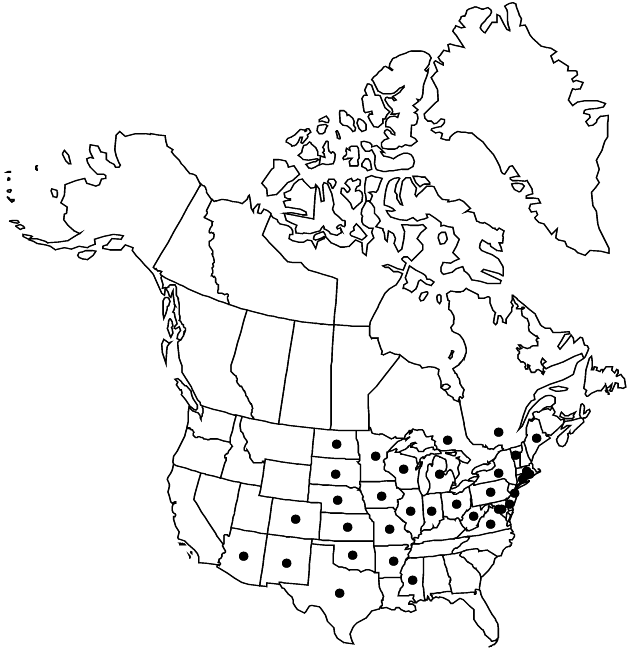Symphyotrichum ericoides var. ericoides
Plants densely to diffusely colonial; strongly rhizomatous, not cormoid. Stems 1, decumbent to erect. Involucres cylindro-campanulate (fresh). 2n = 10, 20.
Phenology: Flowering Aug–Oct(–Nov).
Habitat: Open, dry to moist, well drained, sandy or gravelly, disturbed soils, prairies, glades, dunes, fields, shores, railroad rights-of-way, roadsides
Elevation: 30–2200 m
Distribution

Man., Ont., Que., Ariz., Ark., Colo., Conn., Del., D.C., Ill., Ind., Iowa, Kans., Maine, Md., Mass., Mich., Minn., Miss., Mo., Nebr., N.J., N.Mex., N.Y., N.Dak., Ohio, Okla., Pa., R.I., S.Dak., Tex., Vt., Va., W.Va., Wis., Mexico (Coahuila, Nuevo León).
Discussion
Variety ericoides is introduced in Quebec and possibly also in Tennessee. It was treated as a subspecies with two weakly separated varieties distinguished by stem and indument traits by A. G. Jones (1978). Plants with sparsely strigose stems with the hairs spreading to ascending were treated as var. ericoides. Plants with densely divaricate-hirsute stems and slightly smaller heads were treated as var. prostratum. Both indument types can be found on the same stem and there is considerable overlap in the range of values of floret traits. Diploids are found throughout the range; tetraploids occur on the Great Plains. The following forms are not recognized here: Aster ericoides forma prostratus (Kuntze) Fernald and forma exiguus (Fernald) Fernald.
Selected References
None.